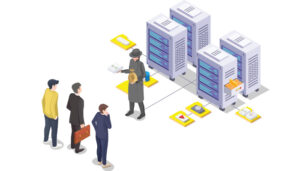Companies are facing challenges regarding protecting their data in today’s digital landscape. Securing the information and maintaining strong cybersecurity is important.
External threats like hackers and malware are well-known and usually prioritized. However, one important area that is frequently ignored is insider threats.
A company’s security risks are typically caused by employees, contractors, or trusted partners. Ignoring the possible damage these insiders can cause is a big mistake. It can lead to big effects on any company’s IT security.
This article explores the pitfalls of ignoring insider threats. It highlights the importance of addressing this usually neglected part of cybersecurity.
The Nature of Insider Threats

They can appear in many forms, from unwanted errors to harmful intent. Knowing the different types is important to fight their impact. The three main categories are:
- Negligent: These people typically cause a threat by mistake. This usually happens due to insufficient training, unawareness, or carelessness. Their actions can include mishandling sensitive data or ignoring security protocols.
- Compromised: Sometimes, they become unknowing participants in cyberattacks after falling victim. This causes malware infections, social engineering techniques, or blackmail. It forces people to compromise business security.
- Malicious: This category includes people who, on purpose, use their access privileges. In addition, they use knowledge of internal systems for personal gain or revenge. They may steal sensitive information, damage data, or disturb important processes.
Impact of Insider Threats

Ignoring insider threats can have severe fallout that reverberates throughout a company. The following key impacts highlight the gravity of this issue:
- Financial Loss: They can result in heavy financial losses for businesses. Customer data breaches or disturbances in systems can lead to lost revenue. It can even cause legal penalties, lawsuits, and damage to the company’s reputation.
- Operational Disturbance: Harmful insiders can disturb important business operations. These operations include altering or deleting data, introducing malware, or causing system errors. The resulting downtime can damage the work cycle and customer trust. In addition, it can hinder the company’s ability to serve its clients.
- Damage to Reputation: A single insider breach can damage a company’s reputation. This can break customer confidence and loyalty. The fallout from a security incident may result in affected market value. In addition, it decreases investor trust and a loss of competitive advantage.
- Intellectual Property Theft: It includes trade secrets, research, and development plans. These represent a company’s most valuable assets. Insiders can steal or leak sensitive information. This compromises a company’s competitive edge and future growth.
- Governing and Legal Issues: Many industries face strict data protection governing requirements. Failure to address insider threats can lead to legal actions, fines, and battles. This can drain resources and tarnish a company’s standing.
Challenges in Detecting Insider Threats

Detecting them brings unique challenges due to their convenience to a company’s systems and data. The following factors contribute to the difficulty of detection:
- Valid Access: They often have valid access to company resources. This makes recognizing authorized and malicious activities harder. It creates a challenge for security teams in monitoring and identifying potential threats.
- Behavioral Disparity: They can perform patterns that change over time. It makes building a baseline for normal activity challenging. Detecting deviations from typical behavior requires deep monitoring tools and techniques.
- False Positives: Identifying insider threats usually involves straining through large data. This can result in many false positives. The valid activities are incorrectly flagged as potential threats. Sorting through these false positives consumes valuable time and resources. In addition, it diverts attention from genuine risks.
- Psychological Factors: Detecting harmful intent within a business requires understanding human psychology. Predicting when an insider may exhibit signs of discontent can be challenging. This makes it difficult to fight risks proactively.
Strategies to Fight Insider Threats

Addressing them requires a robust approach that combines high-tech solutions and employee education. The following strategies can help businesses fight the risks posed by insiders:
- User Access Controls: Strong user access controls prevent unwanted access to sensitive data. Use the principle of least privilege. Grant employees only the access that they need to perform their roles. Regularly review and revoke access privileges for employees who no longer require them.
- Employee Education and Awareness: Training employees about the importance of IT security and the risks linked with insider threats is crucial. Educate them about common attack vectors such as phishing and password hygiene. Encourage a culture of reporting suspicious activities to the right security teams.
- Monitoring and Auditing: Use Monitoring and auditing systems that track user activities within the company’s network and systems. This allows the recognition of unusual behavior patterns and deviations from normal activity. Proactively monitor privileged user accounts and use alerts for suspicious activities.
- Data Loss Prevention (DLP) Solutions: Deploy DLP solutions that monitor and control the flow of sensitive data within the company. These solutions can detect and prevent unwanted data transfers, whether intentional or accidental. Use encryption and data classification mechanisms to protect sensitive information.
- Incident Response Plan: Develop a robust incident response plan that outlines the steps in an insider threat incident. This includes clear contact channels and a defined chain of command. In addition, they should collaborate with legal departments. This helps in handling tests and potential actions.
- Employee Support and Engagement: Adapt a positive work environment that promotes employee satisfaction, engagement, and well-being. Address employee concerns promptly and provide a path for reporting grievances or suspicions. A satisfied and engaged workforce is less likely to engage in malicious activities.
- Continuous Monitoring and Assessment: IT security is an ongoing process. Regularly review and update security measures, including access controls, policies, and procedures. Conduct periodic security audits and assessments to identify weaknesses and address them promptly.
Also Read: Are Digital Transformation Projects Delayed Due to Lack of Cooperation among IT Security Teams?
Summing Up
Ignoring insider threats in IT security can have severe consequences for businesses. The pitfalls linked with neglecting these threats cause financial loss and operational disruptions. They can also lead to damage to reputation and legal actions.
Detecting insider threats brings challenges due to the nature of insider access and insider knowledge. However, businesses can implement strategies to fight these risks effectively. Adopt a complete approach that combines technology solutions and employee education.
In addition, it should include monitoring and auditing and a proactive incident response plan. Businesses can improve their ability to detect and prevent insider threats. It is essential to recognize the importance of insider threats.
Companies should prioritize them alongside external cybersecurity measures. It ensures the complete protection of valuable assets. Also, it maintains the trust of customers, stakeholders, and partners.
For more such updates follow us on Google News ITsecuritywire News. Please subscribe to our Newsletter for more updates.









